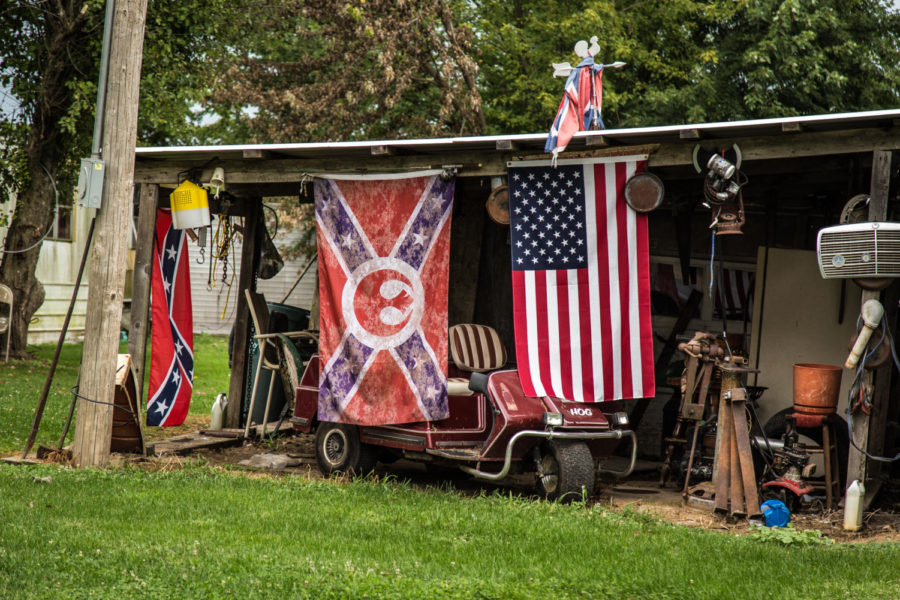Suza: Racism will follow you: A painful reality for Black people
June 21, 2020
Editor’s Note: This is the eighth of a collective series conducted by Walter Suza.
Driving back home after dinner one night, my children and I came to a stop at a traffic light. While waiting for the green light, an apartment with an open window caught my attention. The lights inside the apartment allowed me to see the Confederate flag mounted on the wall.
I noticed a sharp pain arising in my heart. My hands began to hurt from my tight grip on the steering wheel. I tried to control my breathing, but my heart was racing. I noticed tears coming from my eyes. I turned my eyes away from the flag. I wondered whether my children had noticed my emotional reaction and if they had seen the flag in the apartment.
When I lived in the South, it was common to see the Confederate flag mounted on vehicles and homes. I learned that the flag caused immense pain to Black people because of its connection with the Civil War, racism and atrocities such as lynching.
Therefore, each time I saw the Confederate flag, I looked away with disgust. This was one of the reasons I left the South. I wanted to protect my children from racism.
I heard other people arguing “the Confederate flag is not about slavery; it’s about pride of our heritage.” It is difficult to come to terms with this argument, especially after learning the enslavers redacted freedom texts from the slave Bible to maintain their domination over Black people while their descendants are now arguing against the removal of symbols of hate.
Since seeing the Confederate flag in Ames, I have found myself imagining the difficulty for Black people escaping racial injustices in the South during the Great Migration that occurred between 1916 and 1970.
How dreadful it must have been for the freed Black people to realize racism continued to follow them on their way North and West.
Isabel Wilkerson wrote in her essay “The Long-Lasting Legacy of the Great Migration:” Throughout the great migration “wherever Black Southerners went, the hostility and hierarchies that fed the Southern caste system seemed to carry over into the receiving stations in the New World, as the cities of the North and West erected barriers to Black mobility.”
Black people faced overt racism in the form of “whites only” signs on businesses in the North as late as the 1940s. Cities in the Midwest created sundown towns, which did not allow Black people after dark. The Ku Klux Klan also found followers in non-Southern states, including Iowa. And although lynching of Black people was more prevalent in the South, it also happened in the Midwest and Northern states.
Black people also faced institutional racism in the form of policies that promoted segregation. States such as Oregon used a broad-sweeping constitutional framework to block the entry of Black people. And Iowa implemented “Black laws” to prevent free Blacks from settling in the state.
The government designed a mortgage program in 1934 that encouraged “redlining” policies that limited access to mortgage lending and trapped Black people in dilapidated neighborhoods with low property value.
In addition, the non-Southern states used restrictive covenants that prevented Black people from owning homes in white neighborhoods. These discriminatory legal tools limited housing for Blacks in cities such as Chicago and Minneapolis.
In a study entitled “Race in the Heartland,” Colin Gordon writes: “We trace the origins of racial inequality in the Midwest to the deep imprint of racial segregation, which concentrated the regions’ African American population in relatively few urban counties — and then erected a forbidding architecture of residential segregation within those urban settings.”
Racial segregation created suburbs and inner cities.
I can never compare my situation to the inexplicable cruelty against Black Americans with roots to slavery. However, I also left the South with the hope that the Midwest would have less racism for my kids to enjoy being kids and experience the American dream.
The public display of the Confederate flag in Iowa reinforces racism. This makes me angry and sad that I will not be able to protect my children from hate.
Because of racism, the Midwest is said to be one of the worst places for Black people to live.
So where else can Black Americans go?
They should stay right here. This land is also Black people’s land!
Black Americans are citizens of the United States and are entitled to equal protection by the Constitution. They must be allowed their right to live in this country.
It is NOT OK to brandish the Confederate flag when it creates such immense suffering in Black people. We are asked in this country to pledge allegiance to one flag — with 50 stars and 13 stripes!
It is NOT OK for states to use political power to support the display of Confederate memorabilia. I am glad that organizations such as NASCAR and the military have found the courage to ban the Confederate flag.
But we must do more.
White people must demand the removal of all monuments memorializing racism and oppression and speak out against new symbols of hate.
White people must demand an end to white supremacy that is decimating Black people. There must be no place for systemic racism in the United States of America.
When more white people arise to fight for the rights of the marginalized in our communities, there shall be success in ending systemic inequality that has haunted Black people for centuries.

















